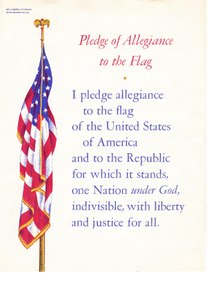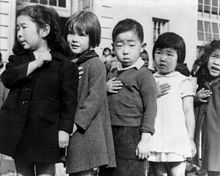Edited/amended from Facebook
image from
John Brown [...] -- Visually shocking/revelatory, the result of meticulous (and doubtless immensely expensive) research -- the documentary was impressive indeed.
But somehow, ultimately, from a '60s perspective ("if you remember the 60s, you weren't there") it didn't quite work as history, despite its accumulation of shocking images.
At least in my modest opinion.
First, as a historian, I found there was a lack of a chronologically cohesive perspective (I won't use the silly word "narrative") that would perhaps have explained how America -- "we" -- got in a criminal geopolitical mess in a part of the world we knew (and still know) nothing/little about.
In the documentary, there were too many intellectually/emotionally uncoordinated images-"episodes" -- forget about the "commentary" -- quite suddenly switching from one image-"episode" to another with hard-to-uncover historical/political links or historical perspective.
It just occurred to me: The French word could be "pastiche."
Second, there's the bigger, and more complex question: "Kto vinovat?" (from the eternal Russian question, "who's guilty/to blame?"; as a student of Russian history, to which I dedicated myself intellectually during the Cold War, as an modest effort to help avoid a nuclear holocaust).
Sure, the Burns documentary evidently didn't want to "point fingers" at anyone -- but from viewing its unsettling, previously not made public images (really the most memorable part of the series) and putting up with the rather corny commentary (the worst part in almost every instance), I felt there was a reluctance by Burns & Co to assert responsibility for "passing judgment."
This attitude -- whom am I to blame? -- does show the virtue of compassion, but it has its limits, especially in a mass-entertainment (internment?) tee-vee show sponsored by Bank of America & other corporate/compassionate sponsors .
Am surprised (should I be?) the chemical company DOW [see] was not among them, so far as I could tell from the list of "sponsors" of the program.
I remember in the late 60s in college, when a fellow-student asked a DOW rep on campus what he thought of the product of his company, napalm, used by the USA/USG in V-N, he replied, "it really burns me up.") ...
But somehow, ultimately, from a '60s perspective ("if you remember the 60s, you weren't there") it didn't quite work as history, despite its accumulation of shocking images.
At least in my modest opinion.
First, as a historian, I found there was a lack of a chronologically cohesive perspective (I won't use the silly word "narrative") that would perhaps have explained how America -- "we" -- got in a criminal geopolitical mess in a part of the world we knew (and still know) nothing/little about.
In the documentary, there were too many intellectually/emotionally uncoordinated images-"episodes" -- forget about the "commentary" -- quite suddenly switching from one image-"episode" to another with hard-to-uncover historical/political links or historical perspective.
It just occurred to me: The French word could be "pastiche."
Second, there's the bigger, and more complex question: "Kto vinovat?" (from the eternal Russian question, "who's guilty/to blame?"; as a student of Russian history, to which I dedicated myself intellectually during the Cold War, as an modest effort to help avoid a nuclear holocaust).
Sure, the Burns documentary evidently didn't want to "point fingers" at anyone -- but from viewing its unsettling, previously not made public images (really the most memorable part of the series) and putting up with the rather corny commentary (the worst part in almost every instance), I felt there was a reluctance by Burns & Co to assert responsibility for "passing judgment."
This attitude -- whom am I to blame? -- does show the virtue of compassion, but it has its limits, especially in a mass-entertainment (internment?) tee-vee show sponsored by Bank of America & other corporate/compassionate sponsors .
Am surprised (should I be?) the chemical company DOW [see] was not among them, so far as I could tell from the list of "sponsors" of the program.
I remember in the late 60s in college, when a fellow-student asked a DOW rep on campus what he thought of the product of his company, napalm, used by the USA/USG in V-N, he replied, "it really burns me up.") ...
***
More from yours truly's reaction to a more recent Facebook comment:







